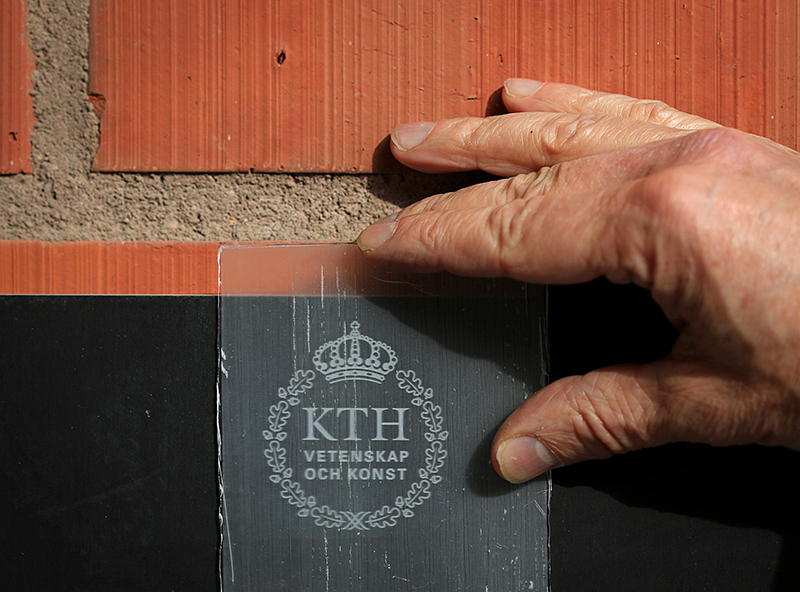Not quite ready as a replacement for some types of glass window panes, nonetheless, transparent (more like translucent) wood is an impressive achievement. According to a March 30, 2016 news item on ScienceDaily size is what makes this piece of transparent wood newsworthy,
Windows and solar panels in the future could be made from one of the best — and cheapest — construction materials known: wood. Researchers at Stockholm’s KTH Royal Institute of Technology [Sweden] have developed a new transparent wood material that’s suitable for mass production.
Lars Berglund, a professor at Wallenberg Wood Science Center at KTH, says that while optically transparent wood has been developed for microscopic samples in the study of wood anatomy, the KTH project introduces a way to use the material on a large scale. …
A March 31 (?), 2016 KTH Institute of Technology press release, which originated the news item, provides more detail,
“Transparent wood is a good material for solar cells, since it’s a low-cost, readily available and renewable resource,” Berglund says. “This becomes particularly important in covering large surfaces with solar cells.”
Berglund says transparent wood panels can also be used for windows, and semitransparent facades, when the idea is to let light in but maintain privacy.
The optically transparent wood is a type of wood veneer in which the lignin, a component of the cell walls, is removed chemically.
“When the lignin is removed, the wood becomes beautifully white. But because wood isn’t not naturally transparent, we achieve that effect with some nanoscale tailoring,” he says.
The white porous veneer substrate is impregnated with a transparent polymer and the optical properties of the two are then matched, he says.
“No one has previously considered the possibility of creating larger transparent structures for use as solar cells and in buildings,” he says
Among the work to be done next is enhancing the transparency of the material and scaling up the manufacturing process, Berglund says.
“We also intend to work further with different types of wood,” he adds.
“Wood is by far the most used bio-based material in buildings. It’s attractive that the material comes from renewable sources. It also offers excellent mechanical properties, including strength, toughness, low density and low thermal conductivity.”
The American Chemical Society has a March 30, 2016 news release about the KTH achievement on EurekAlert highlighting another potential use for transparent wood,
When it comes to indoor lighting, nothing beats the sun’s rays streaming in through windows. Soon, that natural light could be shining through walls, too. Scientists have developed transparent wood that could be used in building materials and could help home and building owners save money on their artificial lighting costs. …
Homeowners often search for ways to brighten up their living space. They opt for light-colored paints, mirrors and lots of lamps and ceiling lights. But if the walls themselves were transparent, this would reduce the need for artificial lighting — and the associated energy costs. Recent work on making transparent paper from wood has led to the potential for making similar but stronger materials. Lars Berglund and colleagues wanted to pursue this possibility.
Here’s a link to and a citation for the paper,
Optically Transparent Wood from a Nanoporous Cellulosic Template: Combining Functional and Structural Performance by Yuanyuan Li, Qiliang Fu, Shun Yu, Min Yan, and Lars Berglund. Biomacromolecules, Article ASAP DOI: 10.1021/acs.biomac.6b00145 Publication Date (Web): March 4, 2016
Copyright © 2016 American Chemical Society
This paper appears to be open access.
